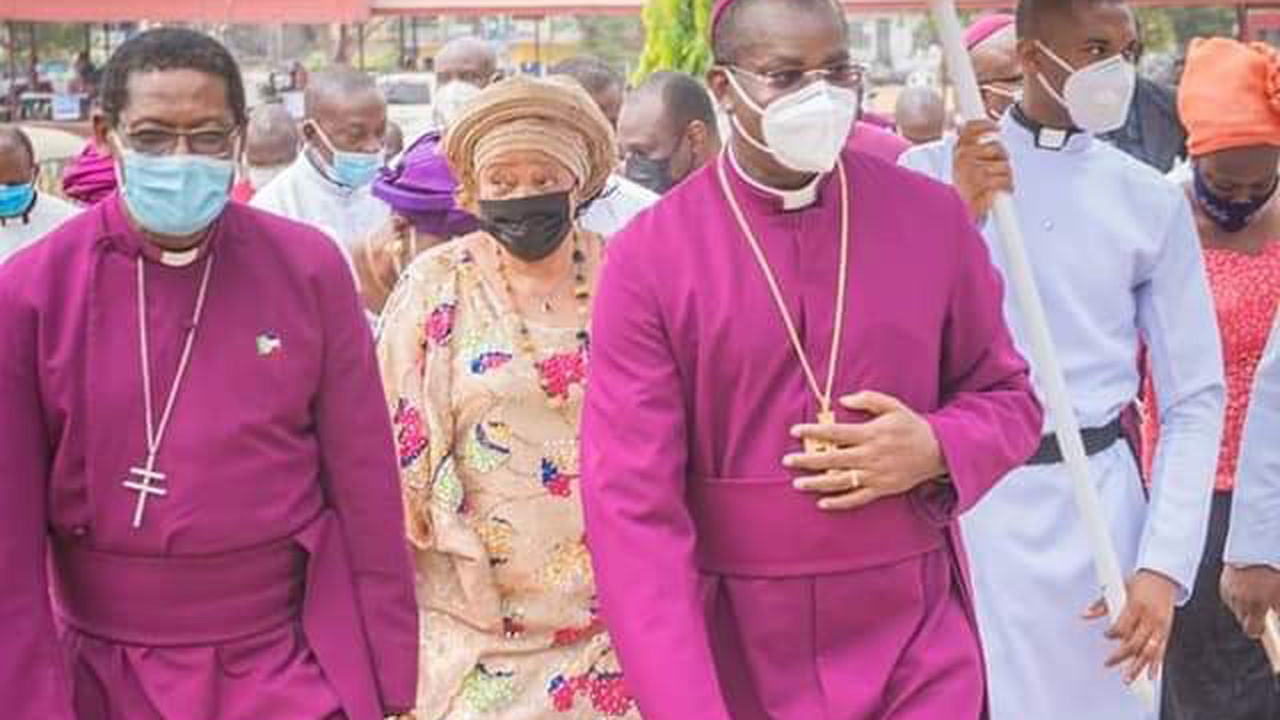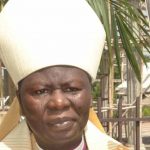By Princewill O. Ireoba
• As Bishop Nwokolo Marks Anniversary
Primate of the Church of Nigeria (Anglican Communion), Most Rev. Henry Ndukuba has described the All Saints Cathedral, Onitsha venue where Diocese on the Niger, hosted all delegates that came for the Church’s Standing Committee, as historic. He recalled the advent of the gospel to Igboland in 1857, led by Samuel Ajayi Crowther, who later became a Bishop in 1864 and Onitsha had remained head of the mission.
Ndukuba said: “The vision to build a Cathedral in Onitsha was that of Bishop Joseph Sydney Hill’s, who was consecrated Bishop in 1893 to succeed Bishop Crowther. The decision was taken when he visited Onitsha after his consecration in 1893. However, he was struck by a sudden illness, which resulted in his death on January 5 1894 and his wife on the following day, January 6, 1894. With Bishop Hill’s death, everything about the proposed Cathedral was suspended. However, relations and friends deposited the caged structure of Bishop Hill’s proposed Cathedral (abandoned in Lagos) at Christ Church Onitsha. During the period, Christ Church, Onitsha served the functions of a Cathedral, although it was not called a Cathedral.
“Bishop Herbert Tugwell succeeded Bishop Hill on March 4, 1894 and continued the dream to build a Cathedral in Onitsha. However, little or nothing was done to that effect, his long episcopacy as the Bishop of Western Equatorial Africa notwithstanding.
“On October 10, 1919, the Diocese of Western Equatorial Africa was divided into two Dioceses: the Diocese on the Niger and the Diocese of Lagos. The Rt Rev Herbert Tugwell the substantive Bishop, chose to become the Bishop of the Diocese on the Niger.
“On October 20, 1919, the Venerable Frank Melville Jones was duly consecrated Bishop for the Diocese of Lagos. And the Diocese of Lagos was inaugurated on March 25, 1920. But Bishop Herbert Tugwell, who chose to be the first Bishop on the Niger, died ever before he set out for Onitsha, the Headquarters of the Diocese on the Niger. The Diocese on the Niger did not take off till 1922, when Bishop Bertram Lasbrey was consecrated Bishop on the Niger.
“Bishop Bertram Lasbery chaired the Diocesan Synod at Christ Church, Onitsha in 1939, where Ven. Victor Umunna moved a motion calling for a befitting Cathedral in Onitsha. At the instance of Bishop Lasbrey, B. J. S. Watkins explained the importance of a Cathedral in a Diocese and the Bishop constituted a committee to work out the details.
“With the ascension of Archbishop C. J. Patterson as the Bishop on the Niger in 1945, strategic efforts were made to commence the building of the Cathedral. Archbishop Patterson envisioned a Cathedral, which will stand as a sure and steadfast witness to the things of God in this land. He thought of a Cathedral of all nations and peoples, designed to be elegant, beautiful and tropical compliant and its tower standing high in Onitsha skyline. The committee worked with the CMS and Nigerian Government authorities to choose the best location in Onitsha, where the Cathedral will be sited. This site was finally chosen.
“Architect Richard Schole Field Nickson, who was briefed, designed this lovely Cathedral in 1949, assisted by Robin York. Architect David Chikwuelum Ifejika took over from them later.
“The foundation stone of this Cathedral was laid on November 9, 1949 by His Excellency, Sir John Stewart Macpherson, Governor General and Commander in Chief of the Armed Forces of Nigeria, after blessings by Archbishop C. J. Patterson.
“In November 1959, Archbishop C. J. Patterson formed the group called the “Friends of the Cathedral.” In his inaugural message, he stated that the group was made up of all who desired the well-being of the Cathedral and the expansion of its mission on earth. Because of the Cathedral’s design, size and the nature, its maintenance is expensive and so, friends of the Cathedral are expected to help the Cathedral through donations for the upkeep of this edifice and its compound.”
Host Bishop on the Niger, Rt. Rev. (Dr) Owen Nwokolo, in his welcome address, explained that “Onitsha was headquarters of the then Diocese of the Western Equatorial Africa” and that over the years, “the Church Year Calendar of the Church of Nigeria (Anglican Communion) consistently reflects 1864 as the year Diocese on the Niger started.”
Bishop Nwokolo, whose 10-year anniversary as Bishop on the Niger coincided with the hosting of the Standing Committee by the Diocese, used occasion to highlight the giant strides that have been recorded in the diocese within the last 10 years. Enumerating achievements, the cleric said: “We have planted 79 new churches, established 49 new Primary Schools and 41 new Secondary Schools, modernising and equipping Iyienu Mission Hospital (one of the oldest Mission Hospitals in Nigeria), establishing two new hospitals (Bethel Hospital Awada and Mary Elms Mission Hospital, Onitsha) in addition to many Primary Health Centres established in different parishes of the diocese.
According to him, a number of Tertiary Educational Institutions have also been established, such as School of Basic Midwifery, School of Medical Laboratory Technician, School of Dental Surgery Technician, School of Health Information Management, School of Pharmacy Technician, Beatrice Onyemelukwe Institute of Management and Technology and School of Nursing. They have also reached a reasonable stage in erecting structures and putting other logistics in place for the take-off of the University on the Niger at Umunya. Over 150 youths were also given scholarships to study various courses in (local and foreign) universities and other higher institutions.
In foreign mission, the Diocese has also, within the years, planted more than 45 new Churches in Togo, Burkina Faso, Mali and Senegal, established a Secondary School and Health Centre in Lome, Togo.
A promising media outfit Alpha Radio/Television Station, enterprising Akuchukwu Micro Finance Bank, well-furnished Olive Guest House, Kings Squad Security Outfit and Niger Printing Press have also been put in place. They also ventured into Agriculture with a growing poultry and Farm Lands for production of Diocese on the Niger Rice and Cassava.
The diocese has also invested in manpower development and landed properties.







